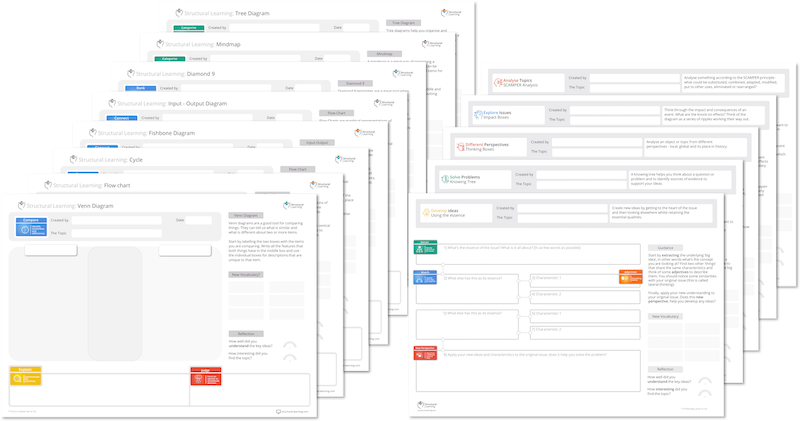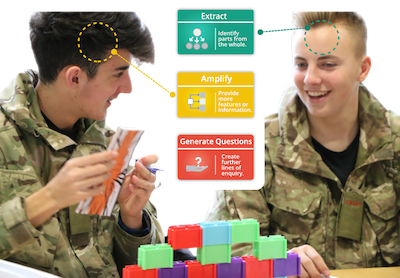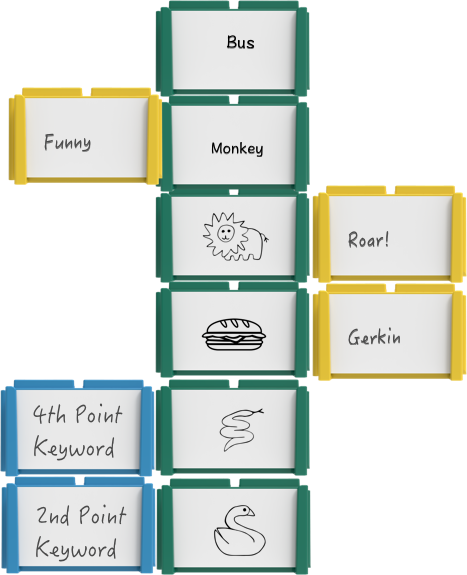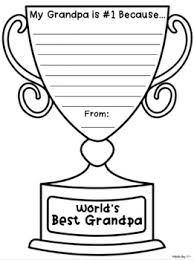Writing Frames for improving literacy outcomes: a teacher's guide
Writing Frames for improving literacy outcomes: a teacher's classroom guide to helping children understand and communicate new ideas.


Writing frames and templates provide a great source for scaffolding instruction and building students’ confidence in writing, especially in writing tasks and genres in which they have limited prior experience. A writing frame comprises a skeleton outline provided to the students to scaffold their written work. By giving some sentence starters and a few rhetorical phrases common to the genre or task, frames provide students with a structure that enables them to concentrate on expressing their ideas.
Writing frames also assist learners in using the vocabulary they have learned about any specific topic and help them compose more sophisticated paragraphs and sentences. For example, in a writing frame with a story setting description learners are provided with a picture, keywords to use and they are demonstrated how to set out their written work.

There are many benefits of using different kinds of frames in writing. Writing frames:
Academic tasks carried out in this way can help students enhance their reading comprehension skills and start to foresee and pursue the academic writing style.

The model of teaching useful for applying writing frames in a classroom can be summarised as follows:
Demonstration(Teacher modelling)
Collaborative writing
(Supported writing)
Independent writing
Using a writing frame must always start with the discussion and teacher modelling before starting collaborative writing (learner and teacher together) and then the student will write with the writing frame's support. This collaborative pattern of teaching/ teacher modelling is crucial as it does not only involve the words that signal transitions and connections and model the generic form but it also offers opportunities for enhancing language function and thinking of learners.

Using writing frames or templates as teaching resources for teaching complicated ideas is not cheating. It is just like learning to dance with a mentor. It enables the learner to pay attention to the right moves in his/her individual style. Writing frames will be used only as long as they are needed. Writing coaches—and dancing coaches— understand when they can remove the scaffolds. They remove the scaffolds when learners begin to combine moves in effective ways that indicate their understanding of the fundamentals and their personal expression.

Using graphic organisers and writing frames gives children access to the underlying structure of the content. These cross-curricular resources enable students to see how ideas are organised. This provides shape and order to our thinking. Within the English language, there are a finite amount of ways of organising ideas. Once children become comfortable with these frames, the language structures fit neatly around the ideas. For example, if a child is going to write about a historical event they might organise their ideas chronologically, such as a timeline. Once the student has plotted out the events in a concrete resource they can then begin to think about the language function that explains the organisation of the ideas. In the case of a timeline, we might use conjunctions such as, before, then, after, subsequently etc.

The writing frame or graphic organiser acts as a tool for scaffolding language around the students' ideas. Once the learner has a clear understanding of a body of knowledge and they can see the curriculum context, they are in a much stronger position to be able to articulate their ideas onto paper. The national curriculum has opportunities to use writing frames all the way through each curriculum topic. The key task is to identify how to organise the ideas. This will then help the pupil to identify the type of text they will be writing. When this type of pedagogy is most effective, the resource is not used in a dedicated lesson. Their ubiquitous use becomes a basic literacy skill that the whole school embraces. They will always serve as a strong tool in English lessons but their utility holds value across the entire curriculum in school. Our collection of resources have helped teachers identify where to use visual tools when engaging in the curriculum design process.
Teachers play a crucial role in helping learners to use a collection of writing frames to improve writing for the learners. Teachers must:
(a) challenge the learners by involving them in analysing the elements of text, fiction and non-fiction both;
(b) model a large variety of techniques for responding to the details by paying attention to the writing; and
(c) ask learners to review and modify their responses after a guided reading of the content.

Using a frame in writing is suitable for guided writing in which the instructor assists a small group of learners in learning international languages or/ and writing a variety of text types. In guided writing, the educator models by way of mini-lessons and learners use the knowledge they acquired from shared and modelled sessions of writing with varying levels of teacher support. The teacher would help learners how to use writing frames in the following steps. The teacher would:

Following are some examples of writing frames for students.
Prompt Question Writing Frames: Just like classroom posters, a Prompt Question Writing Frame is an eye-catching writing frame mostly used for creative writing tasks in the English classroom. Prompt Question Writing Frames include a picture, lines for writing and an open-ended question to spark learners’ imagination. Below is an example of Prompt Question Writing Frames.
.png)
Speaking Frame: It is a kind of sentence frame that contains models and sentence starters for English language learners who are lacking English language proficiency and have limited knowledge of standard sentence structure needed for creating sentences independently. A speaking frame is a helpful frame that provides the desired support, and the support is gradually removed. Below is an example of a speaking frame.
.jpeg)
Trophy Writing Frame: It is primarily used in primary schools in several ways. A Trophy Writing Frame provides a fun way for school aged children to write about someone who they consider a champion. Or, it is a frame to record memories as students can write a match report or any other big sporting event using a trophy writing frame.

Writing frames provide a great source for creating an engaging lesson. Writing frames are not only useful for language learning, but teachers can choose any lovely writing frame from a huge variety such as drawing frame, autumn frame, yellow doodle frames, blue doodle writing frames, book frame, fun frame and many more, to teach other subjects as well. Also, learners and teachers can create their own printable frame / additional writing frames according to their needs. Classroom discussion, key language structures and argument moves made by the discussion participants, all can be used to generate the most relevant and useful writing frames. However, it is suggested to connect writing frames with summarization for the tasks involving an opinion or critique of texts.
Writing frames and templates provide a great source for scaffolding instruction and building students’ confidence in writing, especially in writing tasks and genres in which they have limited prior experience. A writing frame comprises a skeleton outline provided to the students to scaffold their written work. By giving some sentence starters and a few rhetorical phrases common to the genre or task, frames provide students with a structure that enables them to concentrate on expressing their ideas.
Writing frames also assist learners in using the vocabulary they have learned about any specific topic and help them compose more sophisticated paragraphs and sentences. For example, in a writing frame with a story setting description learners are provided with a picture, keywords to use and they are demonstrated how to set out their written work.

There are many benefits of using different kinds of frames in writing. Writing frames:
Academic tasks carried out in this way can help students enhance their reading comprehension skills and start to foresee and pursue the academic writing style.

The model of teaching useful for applying writing frames in a classroom can be summarised as follows:
Demonstration(Teacher modelling)
Collaborative writing
(Supported writing)
Independent writing
Using a writing frame must always start with the discussion and teacher modelling before starting collaborative writing (learner and teacher together) and then the student will write with the writing frame's support. This collaborative pattern of teaching/ teacher modelling is crucial as it does not only involve the words that signal transitions and connections and model the generic form but it also offers opportunities for enhancing language function and thinking of learners.

Using writing frames or templates as teaching resources for teaching complicated ideas is not cheating. It is just like learning to dance with a mentor. It enables the learner to pay attention to the right moves in his/her individual style. Writing frames will be used only as long as they are needed. Writing coaches—and dancing coaches— understand when they can remove the scaffolds. They remove the scaffolds when learners begin to combine moves in effective ways that indicate their understanding of the fundamentals and their personal expression.

Using graphic organisers and writing frames gives children access to the underlying structure of the content. These cross-curricular resources enable students to see how ideas are organised. This provides shape and order to our thinking. Within the English language, there are a finite amount of ways of organising ideas. Once children become comfortable with these frames, the language structures fit neatly around the ideas. For example, if a child is going to write about a historical event they might organise their ideas chronologically, such as a timeline. Once the student has plotted out the events in a concrete resource they can then begin to think about the language function that explains the organisation of the ideas. In the case of a timeline, we might use conjunctions such as, before, then, after, subsequently etc.

The writing frame or graphic organiser acts as a tool for scaffolding language around the students' ideas. Once the learner has a clear understanding of a body of knowledge and they can see the curriculum context, they are in a much stronger position to be able to articulate their ideas onto paper. The national curriculum has opportunities to use writing frames all the way through each curriculum topic. The key task is to identify how to organise the ideas. This will then help the pupil to identify the type of text they will be writing. When this type of pedagogy is most effective, the resource is not used in a dedicated lesson. Their ubiquitous use becomes a basic literacy skill that the whole school embraces. They will always serve as a strong tool in English lessons but their utility holds value across the entire curriculum in school. Our collection of resources have helped teachers identify where to use visual tools when engaging in the curriculum design process.
Teachers play a crucial role in helping learners to use a collection of writing frames to improve writing for the learners. Teachers must:
(a) challenge the learners by involving them in analysing the elements of text, fiction and non-fiction both;
(b) model a large variety of techniques for responding to the details by paying attention to the writing; and
(c) ask learners to review and modify their responses after a guided reading of the content.

Using a frame in writing is suitable for guided writing in which the instructor assists a small group of learners in learning international languages or/ and writing a variety of text types. In guided writing, the educator models by way of mini-lessons and learners use the knowledge they acquired from shared and modelled sessions of writing with varying levels of teacher support. The teacher would help learners how to use writing frames in the following steps. The teacher would:

Following are some examples of writing frames for students.
Prompt Question Writing Frames: Just like classroom posters, a Prompt Question Writing Frame is an eye-catching writing frame mostly used for creative writing tasks in the English classroom. Prompt Question Writing Frames include a picture, lines for writing and an open-ended question to spark learners’ imagination. Below is an example of Prompt Question Writing Frames.
.png)
Speaking Frame: It is a kind of sentence frame that contains models and sentence starters for English language learners who are lacking English language proficiency and have limited knowledge of standard sentence structure needed for creating sentences independently. A speaking frame is a helpful frame that provides the desired support, and the support is gradually removed. Below is an example of a speaking frame.
.jpeg)
Trophy Writing Frame: It is primarily used in primary schools in several ways. A Trophy Writing Frame provides a fun way for school aged children to write about someone who they consider a champion. Or, it is a frame to record memories as students can write a match report or any other big sporting event using a trophy writing frame.

Writing frames provide a great source for creating an engaging lesson. Writing frames are not only useful for language learning, but teachers can choose any lovely writing frame from a huge variety such as drawing frame, autumn frame, yellow doodle frames, blue doodle writing frames, book frame, fun frame and many more, to teach other subjects as well. Also, learners and teachers can create their own printable frame / additional writing frames according to their needs. Classroom discussion, key language structures and argument moves made by the discussion participants, all can be used to generate the most relevant and useful writing frames. However, it is suggested to connect writing frames with summarization for the tasks involving an opinion or critique of texts.